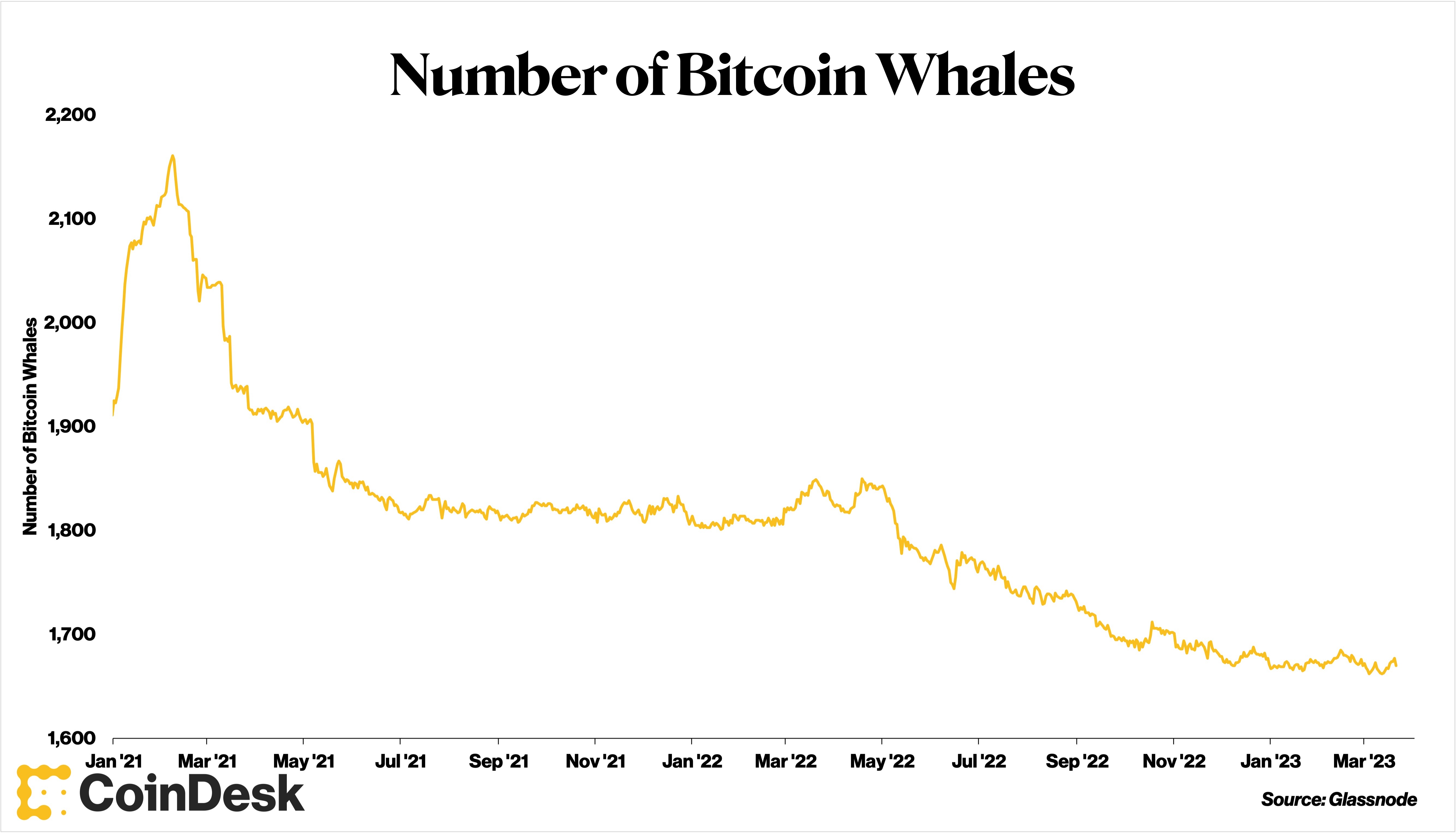Alex Thorn
Head of Firmwide Research
Galaxy
Hear Alex Thorn share his take on “Bitcoin and Inflation: It’s Complicated” at Consensus 2023.
Alex Thorn
Head of Firmwide Research
Galaxy
Hear Alex Thorn share his take on “Bitcoin and Inflation: It’s Complicated” at Consensus 2023.
Glenn C Williams Jr, CMT is a Crypto Markets Analyst with an initial background in traditional finance. His experience includes research and analysis of individual cryptocurrencies, defi protocols, and crypto-based funds. He owns BTC, ETH, UNI, DOT, MATIC, and AVAX
Alex Thorn
Head of Firmwide Research
Galaxy
Hear Alex Thorn share his take on “Bitcoin and Inflation: It’s Complicated” at Consensus 2023.
Alex Thorn
Head of Firmwide Research
Galaxy
Hear Alex Thorn share his take on “Bitcoin and Inflation: It’s Complicated” at Consensus 2023.
Who are the smartest people in the crypto room, and what are they doing with their capital?
“Smart money” is the moniker assigned to a loosely defined group of investors and traders who have an edge in their trading activities, often simply because they have more capital at their disposal.
The argument is that those with more capital have more resources and more to lose. Because of this, other, smaller investors want to know how they are spending their money.
You’re reading Crypto Long & Short, our weekly newsletter featuring insights, news and analysis for the professional investor. Sign up here to get it in your inbox every Wednesday.
To be sure, “smart money” has seemed anything but.
In 1998, Long Term Capital and its team of PhDs required a $3.6 billion bailout, spurred by excessive leverage and poor trading results.
Ten years later, the 2008 financial crisis served as another example when the smartest people in the room required federal assistance to offset trading losses.
Most recently in crypto, the failures of FTX, Alameda Research, Three Arrows Capital and others showed the smartest people in the room making catastrophic mistakes.
So does watching what others are doing make sense at all?
I say, definitely yes. While you should determine your overall thesis, seeing how capital is flowing can provide helpful insights. With the exception of outright fraud, checking the smart money – or so-called large capital flows – always makes sense.
Even if poor results can happen with a sound thesis (maybe an unexpected event changes conditions), what matters is the extent to which those individuals or institutions can sway markets by their mere presence. Like a large ocean vessel, large capital flows often take other things with it, even if they are moving toward an iceberg. Gauging the vessel’s direction ahead of time can offer clues into how closely you want to court disaster and how many life jackets you bring along.
In crypto, a number of online tools can provide real-time insight into how capital is moving. These tools are a uniquely admirable characteristic of blockchain based assets.
Some of the tools vary, depending on the asset. For bitcoin (BTC), one option is “whale activity.” Whales are unique wallet addresses with 1,000 or more coins.
The 1,000 number feels arbitrary, but the implied minimum BTC portfolio value of $28 million today, and nearly $70 million at its peak, feels adequately large to offer some larger investing guideposts.
One metric of note is simply the decline in the number of whales over the last two years.

(Sage Young/CoinDesk)
Since peaking at 2,157 in February 2021, the number of whales has fallen by 22%. BTC’s price, by comparison, has fallen by 41% over the same time period.
Looking at where whales are sending coins is also worth considering. Are whales sending coins to or from exchanges? The former has historically implied bearishness, while the latter usually indicates bullish sentiment.
Recently, coins have been flowing to exchanges. The net exchange volume for whales has been positive since October 2022.
These two factors suggest that larger investors have been cautious. Fewer whales exist, and the ones still around have their coins poised to sell. They could be incorrect, but knowing what they’re doing is worth knowing.
Tools specific to ether (ETH) and altcoins can provide additional layers of information. Platforms such as Nansen and Arkham Intelligence assign “smart money” labels to wallets based on both capital and investing behavior, and can provide real-time looks into their activity.
For example, I’ve recently found that three coins with significant movement into “smart money” wallets over the last 30 days are liquid staked ether, Aave interest-bearing USDT and Binance USD (BUSD).

(Sage Young/CoinDesk)
Looking at individual funds, I found one whose largest identified holding was UNI, an outlier from other larger funds.
Filtering further shows the fund’s acquisition of UNI occurred more than a year ago, with little on-chain activity since that time.
Two years ago, UNI’s price was $32 compared to $6 today.
A fund holding an asset throughout a downturn of that extent could indicate significant long-term belief in the coin itself, a desire to participate in Uniswap governance, or that the fund may cut losses if and when UNI moves higher.
A clear answer may not be readily available, but investors can at least see the possibilities, helping them make informed decisions.
Other recent “smart money” moves that stood out include:
-
A larger fund removing wrapped ether (wETH) from exchanges, while depositing USDT, chainlink (LINK), and wrapped bitcoin (WBTC)
-
Over the last seven days, there have been 4% and 27% declines, respectively, in stablecoins USDC and USDT held in smart money wallets; WETH held in such wallets increased 12% over the same time period
-
While the net flow of BTC from whales to exchanges has been positive, it has also been trending downward since February
Identifying and analyzing smart money moves can consume hours, and can’t be completely covered in one column. But investors who take the time will enhance their digital research.
A traditional finance (TradFi) analogy would be a real-time live stream of 13F filings disclosing hedge fund positions in equities – hard to sustain, but also hard to look away from.
And whether an investment decision results in profit or not, considering it from its inception is helpful.
Takeaways
-
Making crypto history: On March 21, Coinbase made history, appearing in the very first crypto case to go before the U.S. Supreme court. However, the case wasn’t about digital assets per se, but instead how courts should handle disputes about arbitration, private trials where a neutral person (called an arbitrator) listens to both sides and makes a decision. In short, Coinbase argued that if the court says customers can go to court instead of arbitration (in spite of what was outlined in the user agreement), then companies like Coinbase should be able to put the brakes on the court case until they have a chance to appeal that decision. Although this case may not have a direct effect on digital asset businesses, it could have significant implications for Coinbase and other crypto companies in future conflicts with their clients.
-
A scathing critique: The Biden administration’s “Economic Report of the President,” published on March 20, took a swing at crypto, stating that various aspects of the digital asset ecosystem are causing issues for consumers, the financial system and the environment. The report analyzed cryptocurrencies’ role as investment vehicles and payment tools, as well as their potential use in payment infrastructure, and claimed that “many of them do not have a fundamental value” while noting other issues with the sector. The report, more substantive in its treatment of digital assets than other areas of financial services that wreaked havoc in recent weeks, was a scathing critique that made their policy position clear, leaving many in the crypto industry feeling uneasy about the future regulatory landscape.
-
Bitcoin bargain? Bitcoin’s Network Value to Transaction (NVT) ratio has decreased by 60% this year, despite BTC’s price increasing by 68%. This is because transaction activity has outpaced price growth, indicating bullish sentiment and suggesting that bitcoin is currently undervalued. The NVT ratio measures an asset’s market capitalization against its network transfer volume and is used to examine the cost of a digital asset. Similarly, ether’s NVT ratio has decreased by 68% since January, while its price increased by 51%.
-
QE expectations: Bitcoin’s rally to $28,000 nine days caused Crypto Twitter to celebrate in anticipation of an end of monetary tightening, an onset of a new quantitative easing (QE) and the dawn of a new bull run. But the cause of this bullishness is far more complex than the simplistic reasons that the “QE is back!” chorus would have you believe, as Noelle Acheson, former head of research at CoinDesk, writes. What’s clear, however, is that concerns around banking and the debasement of the dollar have led to growing interest in bitcoin as a potential insurance asset. This could cause many investment managers, who were watching from the sidelines, to recalibrate portfolios.
To hear more analysis, click here for CoinDesk’s “Markets Daily Crypto Roundup” podcast.
Learn more about Consensus 2023, CoinDesk’s longest-running and most influential event that brings together all sides of crypto, blockchain and Web3. Head to consensus.coindesk.com to register and buy your pass now.
Sign up for The Node, our daily newsletter bringing you the biggest crypto news and ideas.
By signing up, you will receive emails about CoinDesk product updates, events and marketing and you agree to our terms of services and privacy policy.
DISCLOSURE
Please note that our
and
do not sell my personal information
has been updated
.
The leader in news and information on cryptocurrency, digital assets and the future of money, CoinDesk is a media outlet that strives for the highest journalistic standards and abides by a
strict set of editorial policies.
CoinDesk is an independent operating subsidiary of
which invests in
and blockchain
As part of their compensation, certain CoinDesk employees, including editorial employees, may receive exposure to DCG equity in the form of
which vest over a multi-year period. CoinDesk journalists are not allowed to purchase stock outright in DCG
.
https://www.coindesk.com/business/2023/03/22/smart-money-tools-reveal-where-crypto-capital-is-moving/?utm_medium=referral&utm_source=rss&utm_campaign=headlines



:format(jpg)/www.coindesk.com/resizer/CabGUKozR1NyiBkjN56PYzuQ3RQ=/arc-photo-coindesk/arc2-prod/public/R5JVYM4XOFBPRLGHVGCYQXUAQM.png)


 BTC-USD
BTC-USD  ETH-USD
ETH-USD  LTC-USD
LTC-USD  XRP-USD
XRP-USD